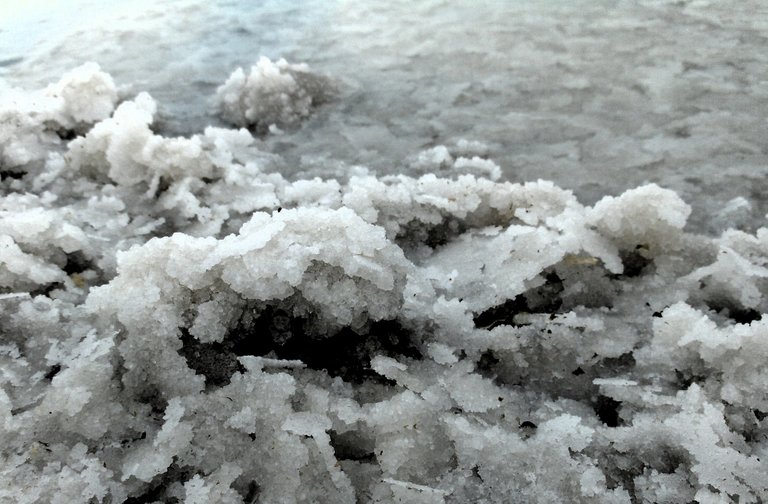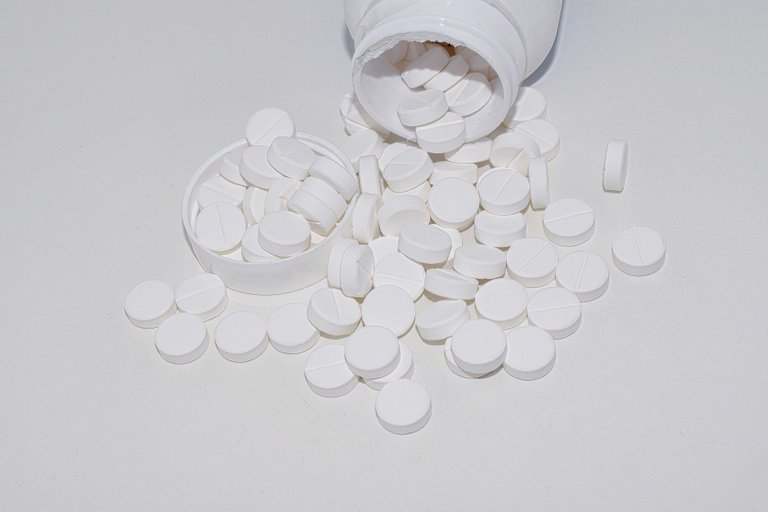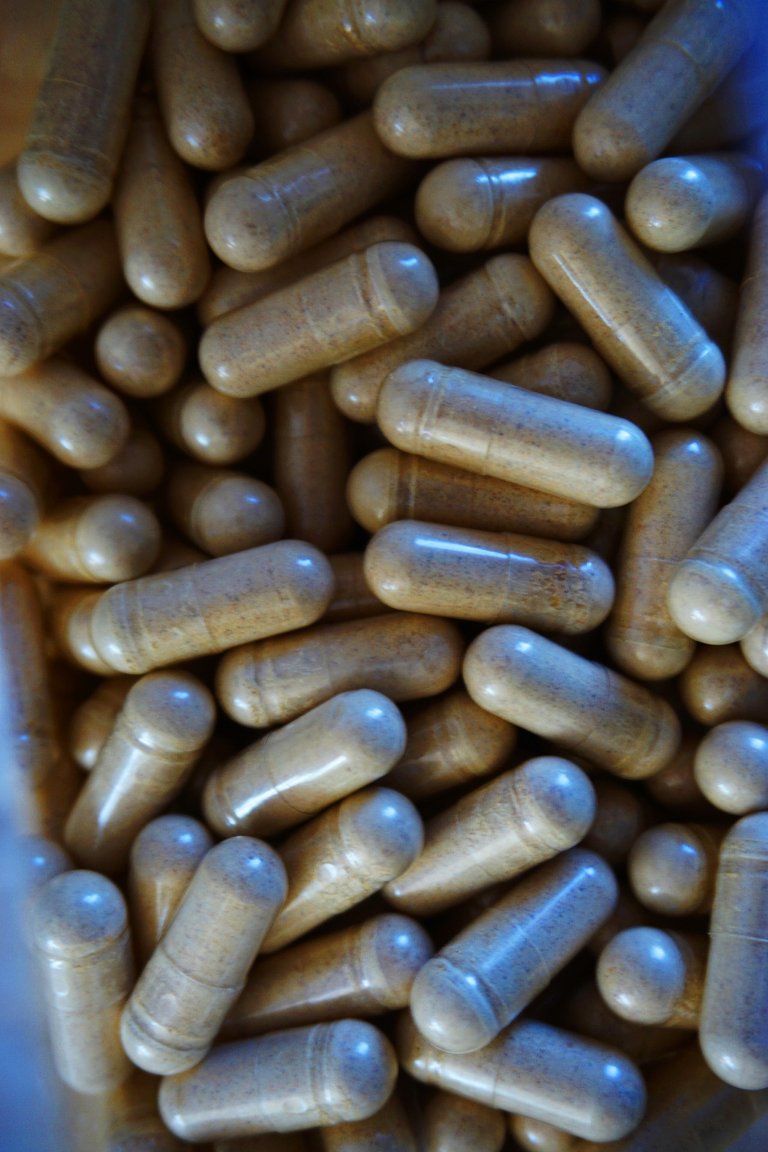Hi everyone,
Today I would like to talk to you about Magnesium, one of the most famous elements in the periodic table.
Introduction
Magnesium is the element of the periodic table that has the symbol Mg and atomic number 12. We find it in two possible oxidation states: 0, +2.
It is a silvery white and very reducing alkaline-earth metal that oxidizes spontaneously in the air and, if activated, explodes with white light (flash):
2 Mg + O2 --> 2 MgO + hv
In H2O it is difficult to dissolve due to the passivation for the formation of slightly soluble Mg(OH)2:
Mg + 2 H2O --> Mh2+ + 2 OH- + H2
Mg + 2 OH- --> Mg(OH)2
Biological interactions
Magnesium is an essential element for the human body, which requires about 10 g. The most important biological actions are:
- In the form of phosphate, it enters the constitution of bones and teeth;
- Mg2+ is essential for cellular metabolism, being bound to ATP and enzymes;
- Has a marked laxative and/or purgative activity, dependent on the dose administered. This ability is due both to the fact that Mg2+ hydrates, leading to hydration of the faecal masses, and to the irritating action that the ion causes at the level of the intestinal mucous membranes causing an increase in peristaltic motions;
- Hypermagnesia can cause kidney stones due to the precipitation of poorly soluble salts;
- Mg2+ depresses the CNS and induces hypotension, at high doses it can also cause cardiac arrest;
- In the plant world, Mg2+ is part of the structure of chlorophyll.
As regards the toxicological aspects, pneumoconiosis (irreversible damage to the alveolar lung tissue) can occur in the processing of poorly soluble Mg compounds such as talc.
Furthermore, malignant lung tumors can occur in the processing of asbestos which is a magnesium-containing silicate.

Photo by PublicDomainPictures from Pixabay
Compounds of pharmaceutical interest
There are numerous pharmaceutical compounds that contain magnesium. The main uses are the antiacid action, in association with aluminum salts, and laxatives. These associations are useful in the treatment of gastric hyperacidity, gastroduodenal ulcer and gastritis:
- Oxide;
- Hydroxide, also called magnesium milk;
- Carbonate;
- Sulphate: It is a purgative and there is a synergistic action of the two ions;
- Trisilicate: Antiacid, disinfectant and intestinal adsorbent;
- Talc: Antiperspirant;
- Stearate: Solid lubrificant;
- Chloride, acetate and aspartate: Used as reintegrators in solutions for hemodialysis.

Photo by aixklusiv from Pixabay
Analytical reactions
The recognition of magnesium can be based on the fact that Mg2+ is precipitated as:
Hydroxide with NH4OH at pH higher than 10. Subsequently, the hydroxide dissolves with NH4Cl reaching pH lower than 9. This is because, due to the ion effect in common, the OH- concentration decreases:
Mg2+ + 2 OH- -> Mg(OH)2Magnesium and ammonium phosphate with Na2HPO4. By adding diluted ammonia and alkaline phosphate to a Mg2+ solution, the magnesium ammonia phosphate is precipitated:
Mg2+ + NH4+ + PO -> MgNH4PO4

Photo by ML_Photography from Pixabay
I hope this post has been interesting for you. You can find more information on the elements of the periodic table in my previous posts: Calcium, Zinc, Iron, Aluminum, Copper and Silver!
See you next time,
Delilha
ITA
Ciao a tutti,
Oggi mi piacerebbe parlarvi del Magnesio, uno degli elementi più famosi della tavola periodica.
Introduzione
Il magnesio è l’elemento della tavola periodica che presenta simbolo Mg e numero atomico 12. Lo troviamo in due possibili stati di ossidazione: 0, +2.
Si tratta di un metallo alcalino-terroso bianco argenteo e molto riducente che si ossida spontaneamente all’aria e, se attivato, esplode con luce bianca (flash):
2 Mg + O2 -> 2 MgO + hv
In H2O si scioglie difficilmente a causa della passivazione dovuta alla formazione di Mg(OH)2 poco solubile:
Mg + 2 H2O -> Mh2+ + 2 OH- + H2
Mg + 2 OH- -> Mg(OH)2
Interazioni biologiche
Il Mg è un elemento essenziale per l’organismo umano, il quale ne richiede circa 10 g. Le azioni biologiche di maggiore rilevanza sono:
- Sotto forma di fosfato, esso entra nella costituzione di ossa e denti;
- Mg2+ è essenziale per il metabolismo cellulare, essendo legato ad ATP ed enzimi;
- Ha una spiccata attività lassativa e/o purgante, dipendente dalla dose somministrata. Questa capacità è dovuta sia al fatto che il Mg2+ si idrata, portando a idratazione delle masse fecali, sia all’azione irritante che lo ione causa a livello delle mucose intestinali causando un aumento dei moti peristaltici;
- L’ipermagnesia può provocare calcolosi renale per la precipitazione di sali poco solubili;
- Mg2+ deprime il SNC e induce ipotensione, ad alte dosi è in grado di provocare anche arresto cardiaco;
- Nel mondo vegetale, il Mg2+ rientra nella struttura della clorofilla.
Per quanto riguarda gli aspetti tossicologici, nelle lavorazioni di composti del Mg poco solubili come il talco si possono verificare casi di pneumoconiosi (danni irreversibili al tessuto alveolare polmonare).
Inoltre, nelle lavorazioni dell'amianto, che è un silicato contenente magnesio, si possono verificare tumori polmonari maligni.

Foto di PublicDomainPictures da Pixabay
Composti di interesse farmaceutico
Numerosi sono i composti di interesse farmaceutico che contengono il magnesio. Gli utilizzi principali sono l’azione antiacida, in associazione con sali di alluminio, e lassativi. Queste associazioni sono utili nel trattamento di iperacidità gastrica, ulcera gastroduodenale e gastriti:
- Ossido;
- Idrossido, chiamato anche latte di magnesio;
- Carbonato;
- Solfato: È un purgante e si ha azione sinergica dei due ioni;
- Trisilicato: Antiacido, disinfettante e adsorbente intestinale;
- Talco: Aspersorio, antiperspirante;
- Stearato: Lubrificante solido;
- Cloruro, acetato e aspartato: Usati come reintegratori in soluzioni per emodialisi.
Reazioni analitiche
Per il riconoscimento del magnesio ci si può basare sul fatto che il Mg2+ viene precipitato come:
Idrossido con NH4OH a pH maggiore di 10. Successivamente, l’idrossido si scioglie con NH4Cl raggiungendo pH minore di 9. Questo perché, per effetto di ione a comune, diminuisce la concentrazione degli OH-:
Mg2+ + 2 OH- -> Mg(OH)2Fosfato di magnesio e ammonio con Na2HPO4. Addizionando ammoniaca diluita e fosfato alcalino a una soluzione di Mg2+, si ha la precipitazione del fosfato ammoniaco magnesiaco:
Mg2+ + NH4+ + PO -> MgNH4PO4

Foto di ML_Photography da Pixabay
Spero che questo post sia stato interessante per voi. Potete trovare altre informazioni sugli elementi della tavola periodica in miei precedenti post: Calcio, Zinco, Ferro, Alluminio, Rame e Argento!
Alla prossima,
Delilha
Sources - Fonti:
European Pharmacopeia


Wow! This is a really useful post.
Thank you very much for passing by on my blog ❤
Io lo uso spesso alla mattina presto quando mi sento stanco (non mi chiedere in che forma 😁😁😁)
!BEER
Grandissimo! Proprio lo scorso mese ho imparato a fare gli integratori con magnesio e potassio, molto utili d'estate per la perdita di sali minerali :) grazie per essere passato, alla prossima!
This post was shared and voted inside the discord by the curators team of discovery-it
Join our community! hive-193212
Discovery-it is also a Witness, vote for us here
Delegate to us for passive income. Check our 80% fee-back Program
View or trade
BEER.Hey @delilhavores, here is a little bit of
BEERfrom @ciuoto for you. Enjoy it!Learn how to earn FREE BEER each day by staking your
BEER.